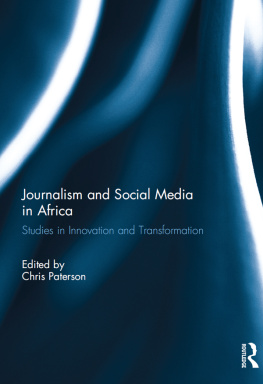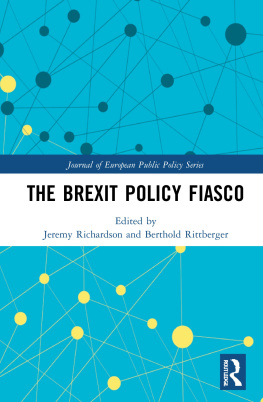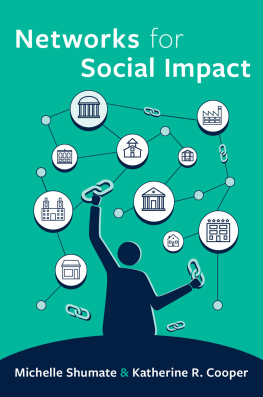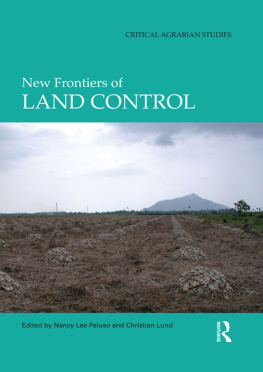CUTTING AND CONNECTING
CUTTING AND CONNECTING
Afrinesian Perspectives on Networks, Relationality, and Exchange
Edited by
Knut Christian Myhre
First published in 2016 by
Berghahn Books
www.berghahnbooks.com
2016 Berghahn Books
Originally published as a special issue of Social Analysis, volume 57, issue 3.
All rights reserved.
Except for the quotation of short passages for the purposes of criticism and review, no part of this book may be reproduced in any form or by any means, electronic or mechanical, including photocopying, recording, or any information storage and retrieval system now known or to be invented, without written permission of the publisher.
Library of Congress Cataloging-in-Publication Data
Names: Myhre, Knut Christian, 1971 editor.
Title: Cutting and connecting : Afrinesian perspectives on networks, relationality, and exchange / edited by Knut Christian Myhre.
Description: New York : Berghahn Books, 2016. | Originally published as a special issue of Social Analysis, volume 57, issue 3. | Includes bibliographical references and index.
Identifiers: LCCN 2016000490 (print) | LCCN 2016000846 (ebook) | ISBN 9781785332630 (pbk. : alk. paper) | ISBN 9781785332647 (ebook)
Subjects: LCSH: Social networksAfrica. | Social networksResearchMethodology. | Social sciencesNetwork analysisMethodology. | EthnologyMelanesia. | AnthropologyAfrica. | AnthropologyComparative method.
Classification: LCC HM741 C88 2016 (print) | LCC HM741 (ebook) | DDC 302.3096dc23
LC record available at http://lccn.loc.gov/2016000490
British Library Cataloguing in Publication Data
A catalogue record for this book is available from the British Library.
ISBN 978-1-78533-263-0 (paperback)
ISBN 978-1-78533-264-7 (ebook)
CONTENTS
Introduction
Cutting and ConnectingAfrinesian Perspectives on Networks, Relationality, and Exchange
Knut Christian Myhre
Chapter 1
Kuru, AIDS, and Witchcraft: Reconfiguring Culpability in Melanesia and Africa
Isak Niehaus
Chapter 2
Law, Opacity, and Information in Urban Gambia
Niklas Hultin
Chapter 3
From Cutting to Fading: A Relational Perspective on Marriage Exchange and Sociality in Rural Gambia
Tone Sommerfelt
Chapter 4
Gathering Up Mutual Help: Work, Personhood, and Relational Freedoms in Tanzania and Melanesia
Daivi Rodima-Taylor
Chapter 5
Rethinking Ethnographic Comparison: Persons and Networks in Africa and Melanesia
Richard Vokes
Chapter 6
Membering and Dismembering: The Poetry and Relationality of Animal Bodies in Kilimanjaro
Knut Christian Myhre
Chapter 7
The Place of Theory: Rights, Networks, and Ethnographic Comparison
Harri Englund and Thomas Yarrow
Afterword
Something to Take BackMelanesia Anthropology after Relationality
Adam Reed
INTRODUCTION
Cutting and ConnectingAfrinesian Perspectives on Networks, Relationality, and Exchange
Knut Christian Myhre
Notes for this section begin on page 20.
The notion of network has recently gained attention and significance, both in public parlance and the social sciences. In an era held to be marked by unprecedented mobility, networks envisage the movements and connections of persons and things through time and space, across boundaries and barriers. Information and communication technologies use network to mean their operations and effects, which are claimed to bring about new kinds of behavior and actualize novel social forms (Anderson 2009). Both media and researchers herald the political potential of social networks and ascribe to these phenomena pivotal roles in the recent Arab Spring and the Occupy and Indignados movements, as well as the alter-globalization protests that preceded them (Juris 2012; Mason 2012; Razsa and Kurnik 2012). The capacity of such liberation technology to defend human rights, improve governance, empower the poor, promote economic development, and pursue a variety of other social goods is explored at the intersection between academic research and applied technology.1 However, network is also used to describe terrorist organizations thatalong with drug cartels, counterfeiters, and Internet fraudstersexploit aspects of globalization in a quest to undermine established institutional and political forms (Gray 2003). Like flow and circulation, network seems a commonplace in discourses that delineate phenomena on a global scale (Ferguson 2006; Tsing 2000, 2005).
Meanwhile, actor-network theory and assemblage theory are just two approaches that employ the term with an aim to describe social complexity without recourse to totalizing concepts that are claimed to have run their course (DeLanda 2006; Latour 2005). As an alternative, these theories trace connections between heterogeneous elements that span different scales and levels to reveal the hybrid character of social phenomena, which transcend analytical divisions and domains (Latour 1993). According to these conceptions, networks not only provide a means for describing and understanding contemporary social phenomena, but also offer an opportunity to rethink the social itself and to reconceive the logic and language of the political (Escobar 2008).
These approaches stress the need to develop new vocabularies of actor-networks and actants, or they redeploy familiar terms, such as assemblages, associations, articulation, and translation, with new meanings in order to reveal the phenomena and processes in question. However, the emphasis on novelty hampers reflection on the precursors to these concepts and ideas, as well as their potential for refashioning more concrete and practical aspects to the anthropological project. Marilyn Strathern (1996a), moreover, points out that the concept of network entails an auto-limitlessness that constitutes both its analytical force and its weakness. It incites one to trace connections in every direction without end, despite the fact that networkslike any action, analysis, or interpretationmust have a point and therefore need to come to an end at some definite place and time. In line with Stratherns (1988a, 1995, 1999, 2005) idea that the relation simultaneously connects and divides, she argues that attention should be directed toward the occasions, events, persons, or things where connections are severed and networks cut in order to actualize specific and definite forms. Cutting is the corollary of connecting: both are conceptual, as well as pragmatic, requirements for any relationship.
Our concern with cutting and connecting in this volume seeks to extend Stratherns insight in order to explore specific relational forms in contemporary African settings with the aim of employing a novel form of anthropological comparison. The chapters gathered here engage notions developed in recent Melanesian ethnography to discuss the means by which, in different African contexts, connections are cut and bonds severed in order to bring certain relations and social forms into being. As I argue below, this undertaking builds on relationships between Africanist anthropology and Melanesian ethnography that amount to debts of multifarious kinds, which enable elicitations of concepts and concerns, analytics and approaches from one region for their deployment in another. However, the ethnographies that these concepts and analytics afford go beyond these interpretive frames, allowing for their distortion and return in modified forms. The ethnographic explorations of the ways in which connections are cut thus allow for an exchange of anthropological analytics that severs the bonds between Africa and Melanesia to proportion the distance between them.









